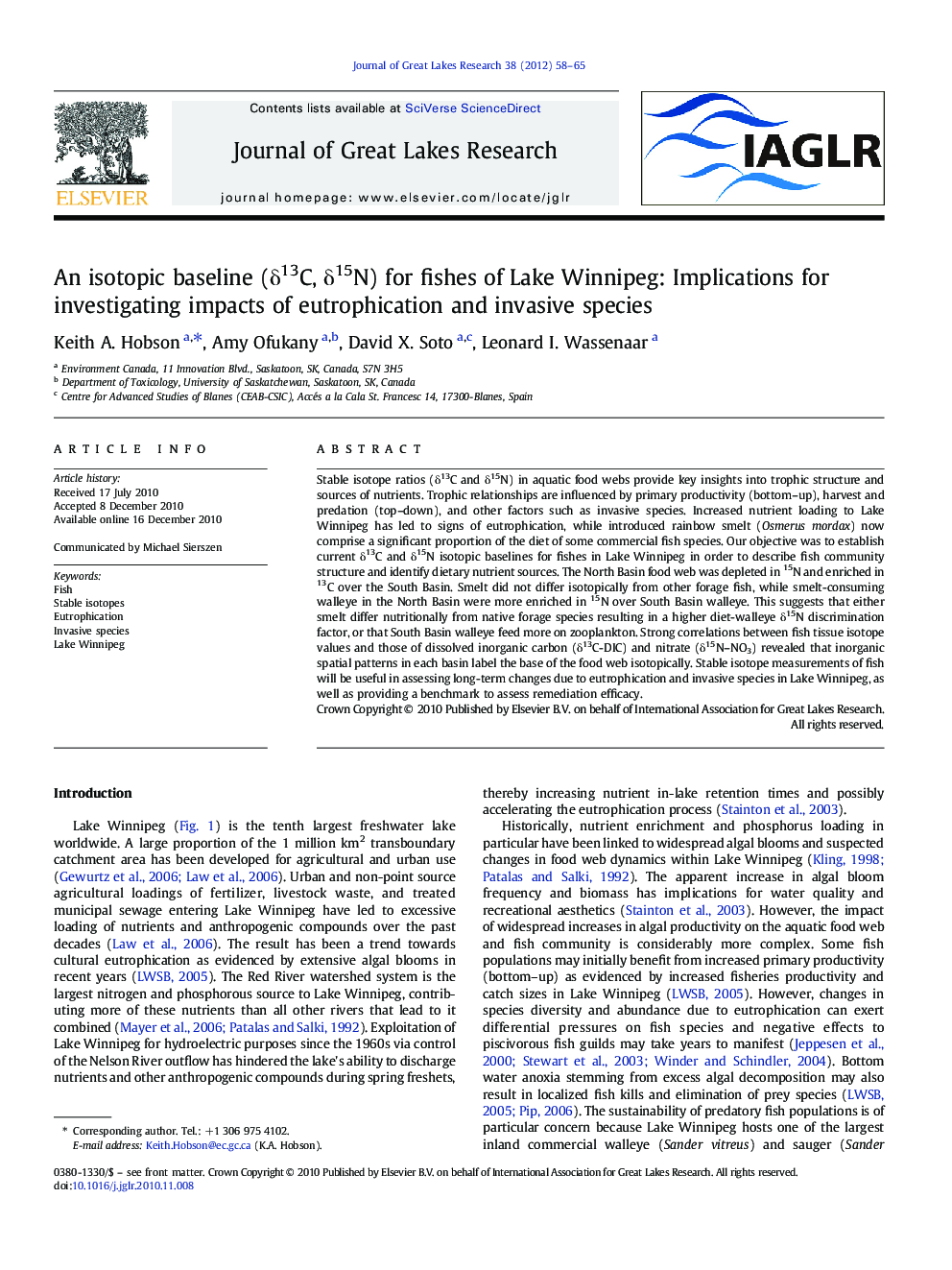| Article ID | Journal | Published Year | Pages | File Type |
|---|---|---|---|---|
| 4398819 | Journal of Great Lakes Research | 2012 | 8 Pages |
Stable isotope ratios (δ13C and δ15N) in aquatic food webs provide key insights into trophic structure and sources of nutrients. Trophic relationships are influenced by primary productivity (bottom–up), harvest and predation (top–down), and other factors such as invasive species. Increased nutrient loading to Lake Winnipeg has led to signs of eutrophication, while introduced rainbow smelt (Osmerus mordax) now comprise a significant proportion of the diet of some commercial fish species. Our objective was to establish current δ13C and δ15N isotopic baselines for fishes in Lake Winnipeg in order to describe fish community structure and identify dietary nutrient sources. The North Basin food web was depleted in 15N and enriched in 13C over the South Basin. Smelt did not differ isotopically from other forage fish, while smelt-consuming walleye in the North Basin were more enriched in 15N over South Basin walleye. This suggests that either smelt differ nutritionally from native forage species resulting in a higher diet-walleye δ15N discrimination factor, or that South Basin walleye feed more on zooplankton. Strong correlations between fish tissue isotope values and those of dissolved inorganic carbon (δ13C-DIC) and nitrate (δ15N–NO3) revealed that inorganic spatial patterns in each basin label the base of the food web isotopically. Stable isotope measurements of fish will be useful in assessing long-term changes due to eutrophication and invasive species in Lake Winnipeg, as well as providing a benchmark to assess remediation efficacy.
